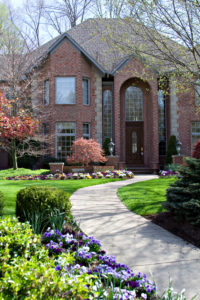Fall Garden Guide: How to Keep Your Garden Healthy and Beautiful This Autumn
 Fall Garden Guide: How to Keep Your Garden Healthy and Beautiful This Autumn
Fall Garden Guide: How to Keep Your Garden Healthy and Beautiful This Autumn
Looking to create a vibrant, healthy garden this fall? Natorp’s Nursery, Cincinnati’s favorite horticultural team, shares expert tips to help you prepare your garden for cooler months.
Essential Fall Garden Tips from Natorp’s
1. Caring for Your Soil & Lawn
- Maintain Soil Moisture: Keep soil consistently moist for larger trees, evergreens, shrubs, perennials, and newly planted additions. Moist soil helps plants survive winter and thrive come spring, especially for evergreens.
- Aerate, Seed & Feed: Late August and early September are ideal for core aeration, overseeding, and applying a starter fertilizer. This timing can extend into October if needed. Avoid seeding too late in October, as success varies with the weather.
- Prevent Winter Weeds: In the fall, apply a pre-emergent to landscape beds to prevent winter annuals like chickweed, henbit, and purslane.
- Control Broadleaf Weeds: October is perfect for targeting broadleaf weeds. For effective results, use a weed killer when weeds are storing nutrients in their roots for winter. For new lawns, ensure the grass has been mowed at least three times before applying weed control.
- Till and Amend the Soil: Fall tilling exposes soil to freeze-thaw cycles, breaking up heavy soil. Add compost, pine soil conditioner, or manure before tilling—fall is ideal for most soil amendments.
2. Don’t Forget Tree Care
- Water Regularly: Keep newly planted trees and shrubs watered until consistently cold weather sets in. Check moisture around foundation plants, especially if sheltered.
- Transplant If Needed: Fall is ideal for moving trees, shrubs, or perennials to new spots.
- Expect Needle Drop: It’s normal for evergreens to shed inner needles in the fall. Just keep them hydrated.
- Prune Carefully: Lightly trim overgrown branches in late fall, but save heavy pruning for late winter or spring. Avoid pruning spring-flowering plants in fall to preserve blooms.
- Feed Trees & Evergreens: If needed, feed trees in late fall with a Ross Root Feeder or soil injector. Apply at half the normal rate for evergreens and wait until late fall.
- Add Winter Protection: For more excellent winter protection, spray evergreens with WiltStop later in the fall. WiltStop can also be applied to rose canes and smaller Japanese maples.
3. Preparing Perennials for Winter
- Divide & Replant: Dig and divide most spring and early summer-blooming perennials as needed in late summer or early fall. August through September is ideal for dividing iris and peonies.
- Clean Up Dead Foliage: Remove dead foliage from perennials and spent annuals. Leave roots in the soil to break down naturally, adding organic matter.
- Compost Healthy Foliage: Place disease-free foliage in the compost pile to enrich your soil for the next season.
4. Activate Your Flower Power
- Store Summer Bulbs: Dig, clean, and store bulbs like cannas, begonias, gladiolas, and caladiums in a cool, dark place. Wait until frost kills the tops, then dig them up for storage.
- Wait to Protect Roses: Hold off on winter protection for roses until they’re fully dormant, close to or after the soil freezes. Prune back long branches but save major pruning for spring.
5. Fall is Perfect for Planting!
- Switch to Fall Bloomers: Refresh summer annuals with fall flowers like mums, asters, pansies, cold-hardy annuals, and ornamental grasses.
- Plant Trees and shrubs: Fall is the best time to plant trees, shrubs, perennials, and even roses.
- Plant Spring Bulbs: From October through November, tulips, daffodils, crocus, hyacinths, and other spring-blooming bulbs should be planted.
6. Grow Cold-Hardy Vegetables and Herbs
Consider planting cold-hardy vegetables and herbs in your fall garden to keep producing fresh greens into the colder months.
Cincinnati Gardening Made Simple! Have Questions? Ask the Experts at Natorp’s
For more expert gardening tips and advice, reach out to Natorp’s team or check out our Plant Care Library for additional resources. We’re here to help you make the most of your garden year-round!